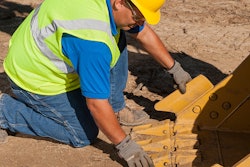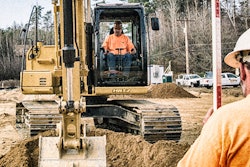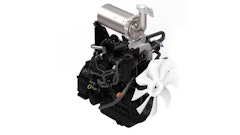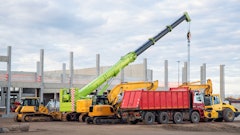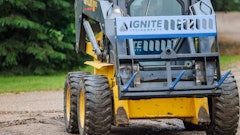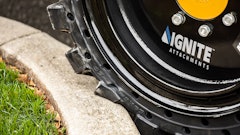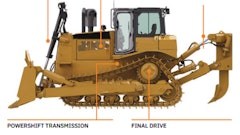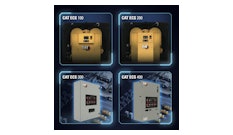
This blog was updated on 6/6/2023.
Cold temperatures and wet, snowy conditions can be hard on equipment. That’s why it’s critical to winterize your machines each year. Make sure you’re focusing on these four key areas:
1. Tires
Air pressure inside equipment tires can start to fall along with the mercury in the thermometer, so check to make sure they’re filled to the proper pounds per square inch (psi) at the start of each shift. If they need airing up, move the machine into a heated area to avoid underinflation issues. Doing the work in an insulated garage or service shop helps the tire bead sit firmly within each wheel’s groove.
Also, use dry nitrogen gas instead of compressed air or a similar mixture when re-inflating equipment tires. It helps fight against ice crystals building up inside the tire during especially cold periods, which can push the valve stem open and increase the chances of deflation.
2. Batteries
Cold weather requires equipment batteries to generate nearly twice as many cranking amps to turn over, so keep yours charged and warm for easy starting. If you’re working in sub-zero temperatures, storing a battery indoors at room temperature when it’s not in use can also help.
If you store batteries, you can help maintain their useful life by recharging them when they drop below 75% capacity and cleaning them to remove any rust, moisture and dirt. Keeping batteries out of use for an extended time? Unplug them from their ground wires, then check their voltage levels and charge as needed once a month.
3. Fuel
Most construction equipment runs on No. 2 diesel fuel during the warmer months. Because this type of fuel can solidify, it’s not recommended for use in colder weather. A simple switch to No. 1 diesel fuel helps hold off the ice that can form when No. 2 fuel remains in the tank and lines.
To avoid a frozen fuel tank at the start of your shift, fill up at the end of each day. And always keep the fuel storage tank clean of water, debris and sediment by draining the water from the water separator on a daily basis before refilling the tank.
4. Inspections
Equipment inspections are critical year-round, but you’ll want to watch out for certain things as temperatures begin to drop and the days get shorter. Don’t get caught out on the job with burnt-out lights, old windshield wipers or a heater that’s not functioning properly. Pay special attention to brakes and fluid levels, too. Before it gets too cold outside, install the correct engine, hydraulic, transmission and final drive lubricants for your machine and the temperature range it will be working in.
Planning to take certain equipment out of service entirely during the colder months? Follow this winter storage checklist so it’s prepped for next spring — and you won’t have to worry about damaged components and unexpected repair bills to start the busy season.
This blog was updated on 6/6/2023.





